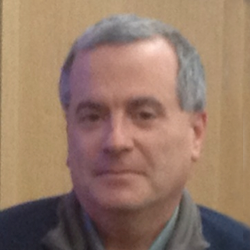4/18/2016 Efficacy of JAK Inhibitors in the Treatment of Alopecia Areata:Angela Christiano Ph.D, CUMC
Abstract: Alopecia areata (AA) is a common autoimmune disease with a lifetime risk of 1.7%. Current treatments including corticoste- roids and other immunomodulators are not FDA-approved and have demonstrated variable e cacy. In 2010, we published the rst genome wide association study in AA, which revealed several susceptibility loci shared with other autoimmune diseases and in key pathways that regulate adaptive and innate immunity. is evidence, in conjunction with gene expression pro ling, pointed to key members of the interferon-gamma (IFN γ) pathway, whose expression levels are markedly upregu- lated in AA. Since the IFNγ pathway is regulated in part by Janus kinases (JAKs), we recently conducted pre-clinical studies to ask whether immunosuppression with JAK inhibitors could induce hair regrowth in the C3H/HeJ gra mouse model of AA. We found that both systemic as well as topical treatment with ruxolitinib (JAK1/2 inhibitor) or tofacitinib (JAK3 inhibi- tor) reversed established disease, a response that persisted for up to 3 months in 100% of mice treated. We next initiated an open label, proof-of-concept clinical trial for the treatment of moderate to severe AA in humans, using oral ruxolitinib 20mg BID. Twelve patients presented with severe, stable AA (greater than 50% hair loss) and were enrolled for 3-6 months of treat- ment. Nine out of 12 (75%) of patients demonstrated a remarkable response to the treatment, with up to 50% hair regrowth compared to baseline. By three months of therapy, responding patients had substantial hair regrowth compared to baseline, together with molecular evidence for normalization of biomarker signatures in scalp skin interrogated by gene expression pro ling. Similar clinical e cacy has also been observed in our ongoing open-label trial of tofacitinib in moderate to severe AA. Unexpectedly, recent work from our lab also found that JAK inhibition can also induce anagen hair growth in the mouse, and elongate the hair sha in human organ culture assays, uncovering a new role for JAK inhibitors in modulating the normal hair cycle. Collectively, our results point to the potential bene t of JAK inhibitors in the treatment of alopecia areata, and potentially other forms of hair loss. Watch Video




